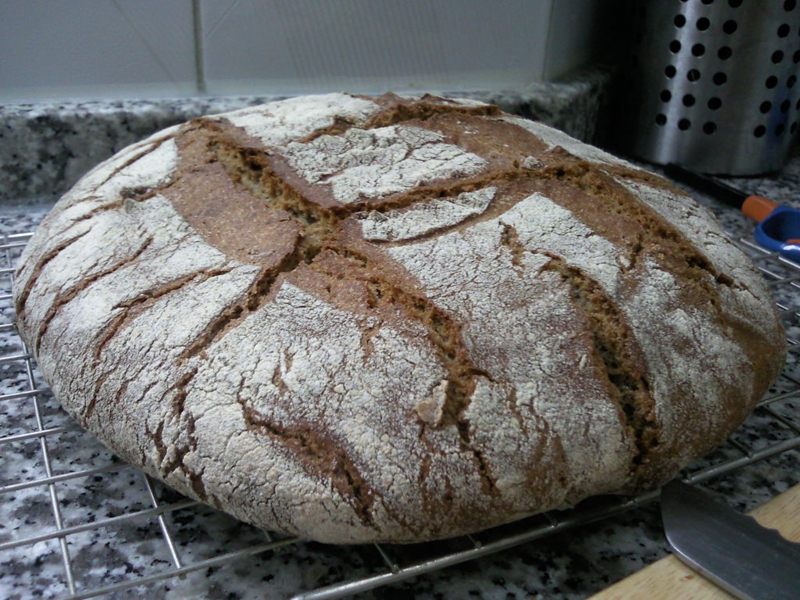A failed endeavour this time, when i hoplessly tried to braid a wholewheat challah as per Peter Reinhart's Wholegrain book, and ended up fusing the braids into a lump of dough and making a boule instead! I may have to reduce the hydration in the challah next time, and the braids may well hold shape.
Anyway, into the Boules i ventured, and this is how i made it:
(All directions are in accordance with P.R Wholgrain breads)
1- Day (1):
- Warm water 1.25 cups + Yeast 1 tsp (not recom. by P.R)+ fine wholegrain flour 3.1 cups
- Mixed by hand, Autolyzed for 10 min, shaped into a ball and set into an oiled bowl, covered with plas. wrap.(BIGA)
- Same ingredients as above but with salt (1 tablespoon) instead of yeast. (SOAKER), shaped and covered with a plastic wrap.
- First (BIGA) goes to fridge or a really cool place, for at least 4 hours and maximum 3 days.
- Second (SOAKER) goes anywhere you want except v. cold or v. warm. for 24 hrs. More than that it has to go to fridge.
2- Day(2):
- First Dough (BIGA) is to be removed from the fridge 2 hrs prior to mixing into dough 2.
- After 2 hrs, cut BIGA, and cut SOAKER into small pieces flouring them as you do so that they won't stick to each other. Mix pieces into a large bowl interchangeably, then add honey (2 tbl)/ Butter/ oil whatever you may savour, and mix vigorously.
- allow the final dough to rest for 1/2 hour.
- Cover with a plastic bag, and allow to ferment until 1 1/2 - double.
-after 45 min or so, scrap the dough into a floured/ oiled/ watered space, and shape into a boule, degazzing as little as possible.
- put the boule into a basket mold/ banetton/ brotform/ to hold shape while fermenting the final time. Meanwhile preheat your oven.
- When boule has risen in 20 minutes to 1.5 its size, put it in the oven on a stone/ cookie tray.. and pur hot water into a hot skillet to generate steam.
- and you all know the rest..
I swear, the taste of this bread is far far superior than the storebought... no comparison, i could it this all day!!
Boule 1 (well a hybrid batard/boule) Just out of the oven:
Boule 2: baked in a thick iron skillet:


and ofcourse, the crumb of boule 1







